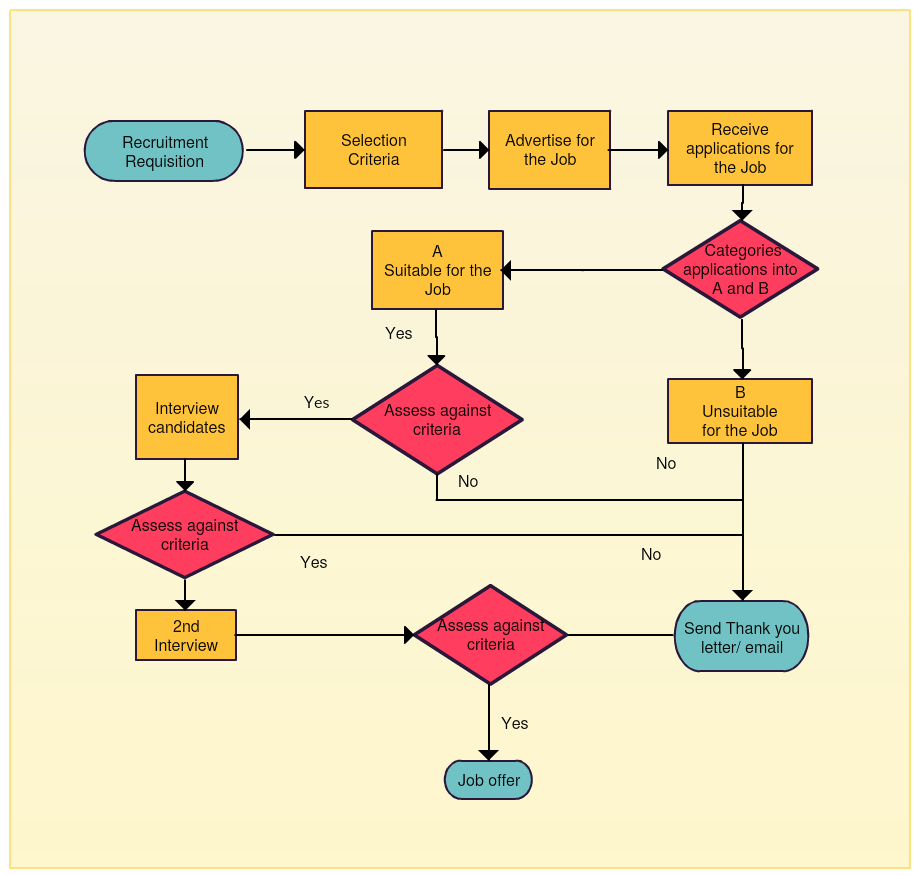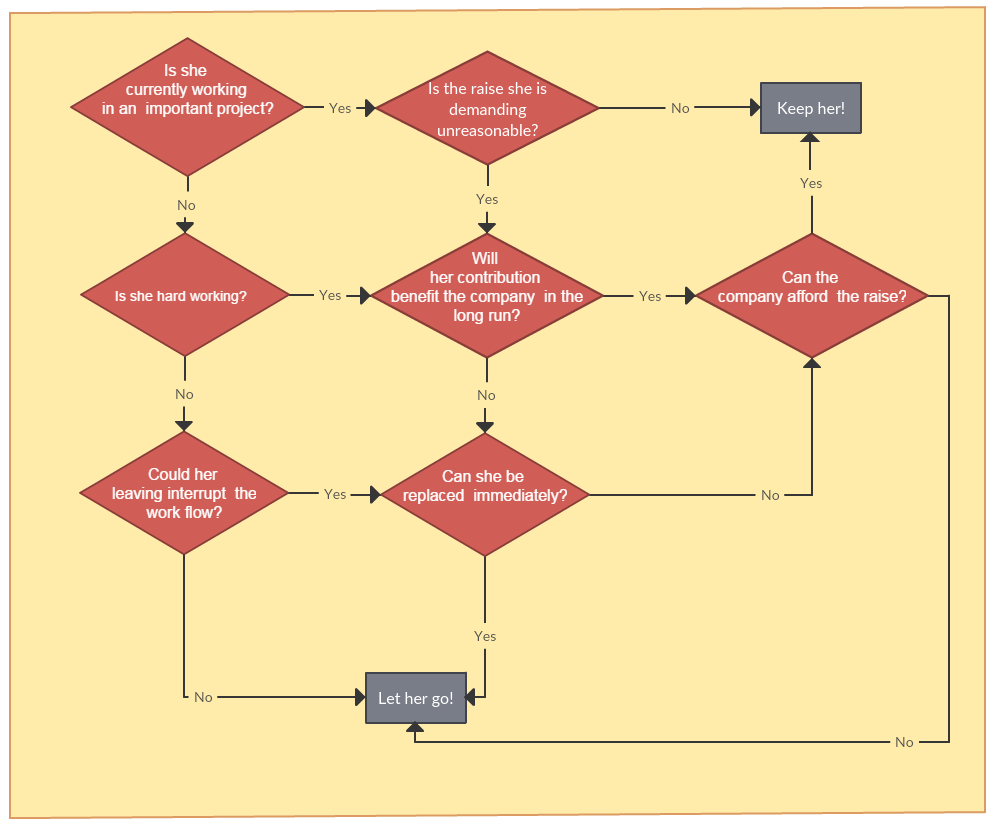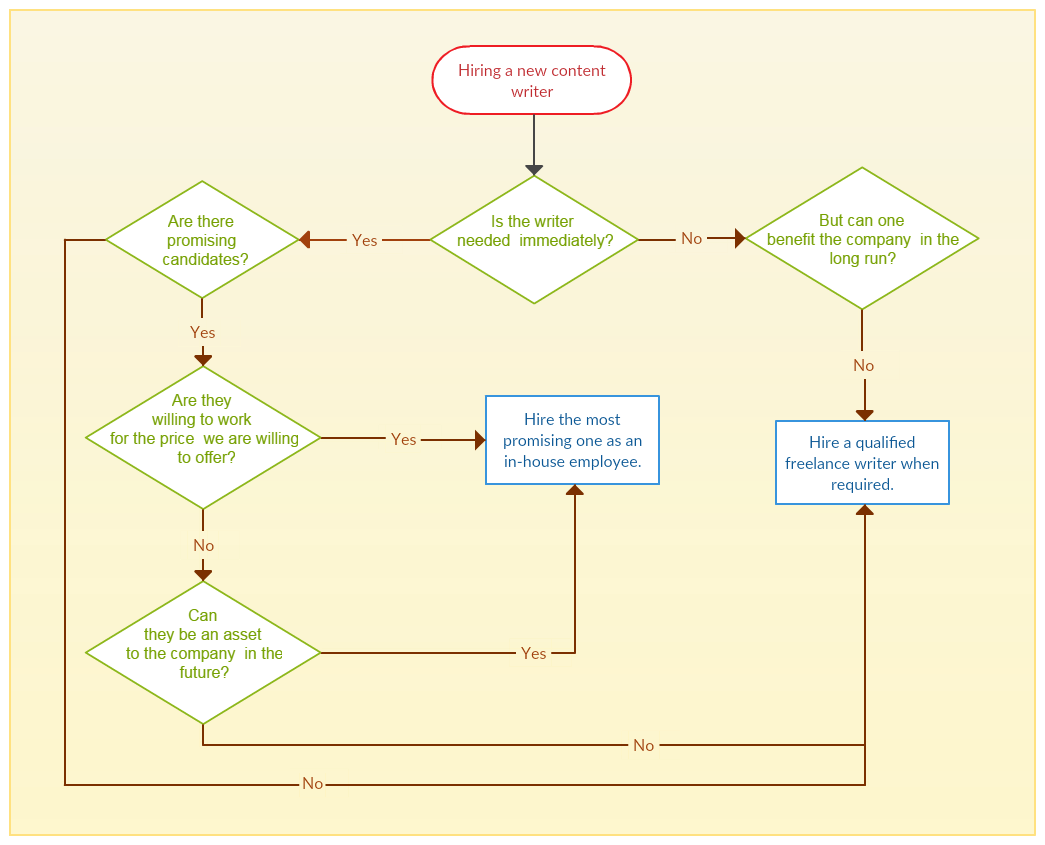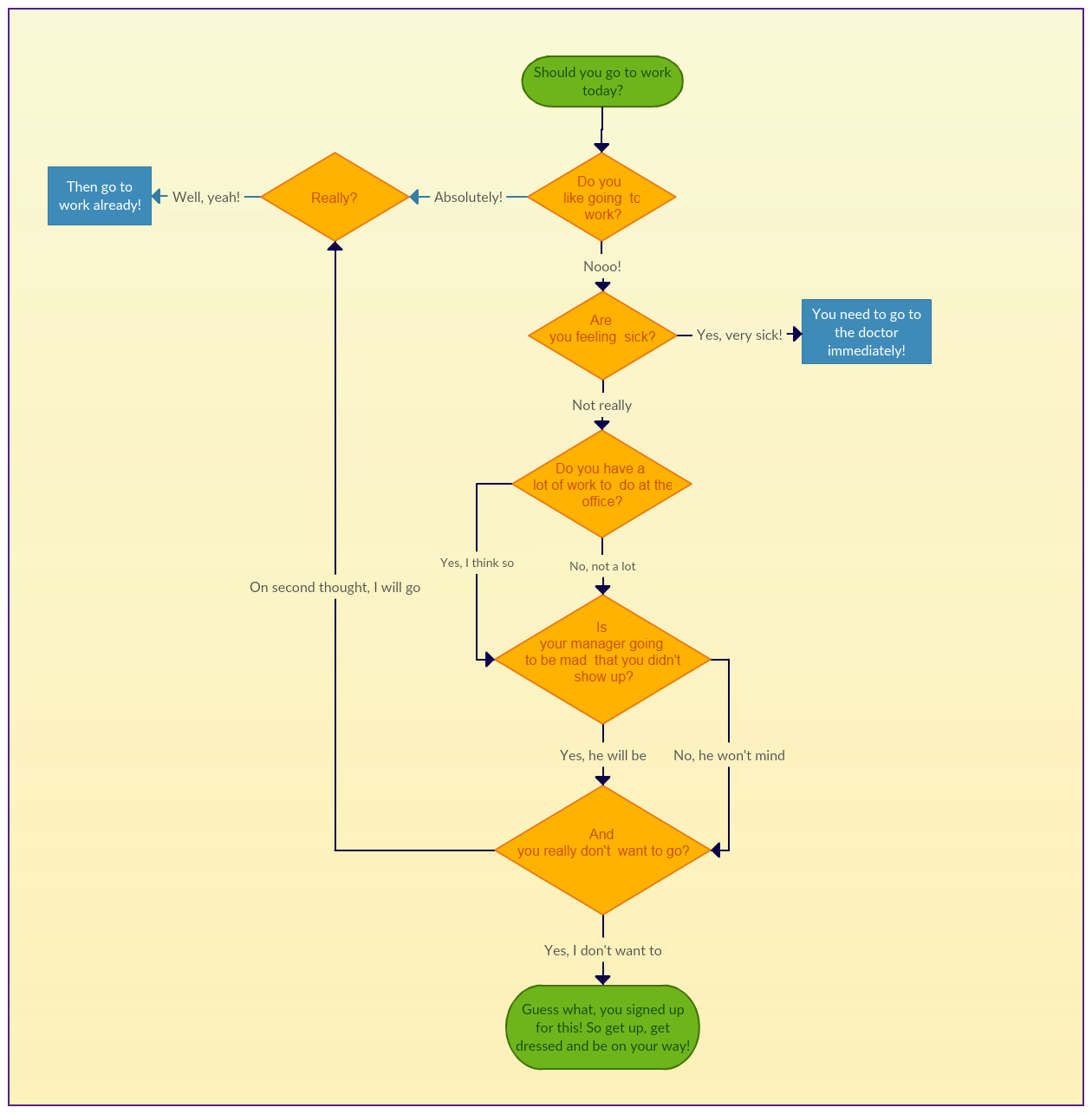
Management and flowcharts go hand in hand, I speak from experience. As a manager my responsibilities include organizing, directing and controlling the activities and resources of the company I work for. This entails constant decision-making, problem-solving and planning. And if you don’t know, these are the top 3 uses of flowcharts.
Basically, a flowchart is a diagram that visualizes the sequence of a process or one that maps the flow of a process as to understand how it is done. When drawing a flowchart, you need to take two things into consideration;
- The proper use of the symbols
- The purpose you are drawing the flowchart for
Check out this flowchart guide to learn about flowchart symbols and best practices.
Once you familiarize yourself with the standards of drawing a flowchart, you can then proceed to use flowcharts to hone your management skills.
Clarify How a Process Work Effectively
Sometimes in order to become efficient at what you do, you simply need to understand how different processes within the organization work.
Be it the recruiting process, manufacturing process, customer support process, etc., knowing which steps come together (and in which order) to create the process, will help you execute your responsibilities as a manager more effectively, especially when it comes to tasks such as decision making, delegating work, planning, etc.
As mentioned above a flowchart helps you outline the steps of a process. Following is the flowchart that I created of the recruiting process of our company; I have to say, drawing it helped me understand the process and memorize it much better.
Make Calculated Decisions like a Pro
Decision-making is an integral part of management. From the start of my day at the office to the end of it, I make a series of decisions; some that require little to no thinking, while some require the focus of every cell of my being.
It could be a decision with regard to an employee who is dissatisfied with his work schedule or about a shareholder who wants to withdraw his share in the company. With such decisions that require proper prior calculation and analysis, a flowchart could be an indispensable tool.
When making a decision, what you are doing is selecting the best possible alternative out of a few others. While it’s not always 100% possible to be certain of the outcome of the decision you make, you can avoid an undesirable aftermath by selecting the most sensible alternative. A flowchart in this regard helps you by allowing you to effectively evaluate the available choices.
Let’s look at an example;
Say an employee who has got a better offer from another company, is asking you for a raise. You have two choices; either to accept the resignation of the said employee or give him a considerable raise to make him stay.
In order to figure out which alternative is the most beneficial to the company, you need to analyze each situation. And as the following example shows, a flowchart does it in a more structured way.
The benefit of using a flowchart thus to make a decision is that it allows you to break down the situation at hand, examine it systematically and brainstorm and identify practical solutions. In strategic decision making, going the extra mile to incorporate a flowchart can definitely reward you as a manager.
Find Optimal Solutions without a Struggle
Problem-solving is another skill managers are expected to have mastered. In a workplace, problems occur all the time; between employees or departments, because of competitors or investors etc.
Yes, a manager should be competent enough to be able to foresee the possibility of problems and minimize their occurrence, but on the off chance a problem does occur, he or she should be equally competent in finding effective solutions immediately.
There are many ways to solve problems, but as I promised, I’m going to show you how to use a flowchart to find optimal solutions for a particular problem.
For example, very recently my company (which is a startup) felt the need for a content writer. I as the manager/ talent acquisition manager was in charge of the whole process. Although it was quite a simple decision to make, there was one slight problem; we quite desperately wanted a content writer, but the company couldn’t afford the expense of another employee at that time.
It wasn’t the size of the flowchart that mattered to me, but the thinking it had me doing; drawing it, I realized I had two solutions and two situations I could implement them on. Since we already had received some promising resumes from a few candidates who could be beneficial to the company in the long run, I decided to hire a permanent employee, rather than a freelance writer who may or may not be available all the time.
A flowchart could not only help you identify a sensible solution, but it could also help you analyze the reliability of the solution itself.
Plan Projects Methodically with Flowcharts
Managing a project could be tedious at times, for it requires focusing on a number of aspects, such as resource allocation, risk management etc. This is why you use project management tools, to keep track of the project and each and every element that is involved in it.
Using a flowchart you can basically plan your project by mapping out the plan and identifying the tasks. To add additional information, such as timeline, owners (departments or team members) etc. you can add swim lanes.
(Bonus) Express Humor Using Flowcharts
That’s right! Not only decision-making, problem-solving and project planning, but flowcharts are also a pretty great way to express humor.
These are the 4 (5, if you count being funny as another skill!) ways flowcharts can help you become a better manager. Try a flowchart now and let us know your experience!





